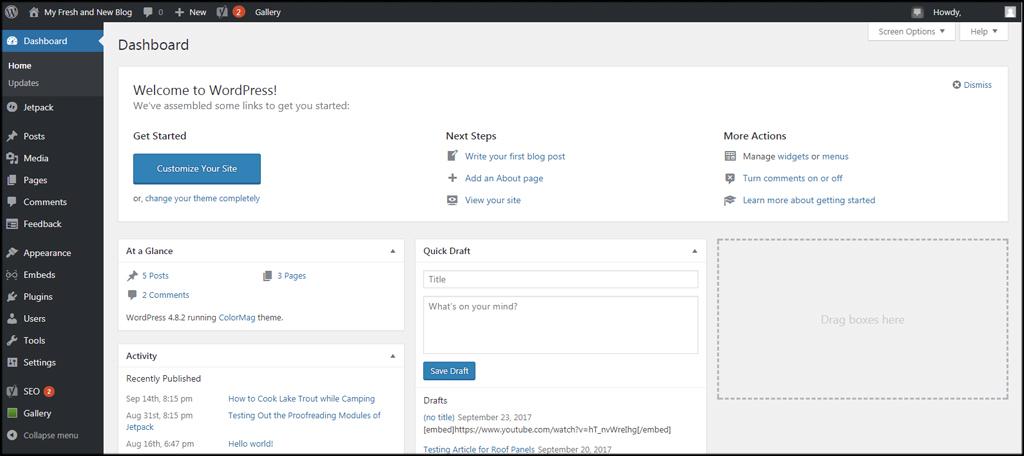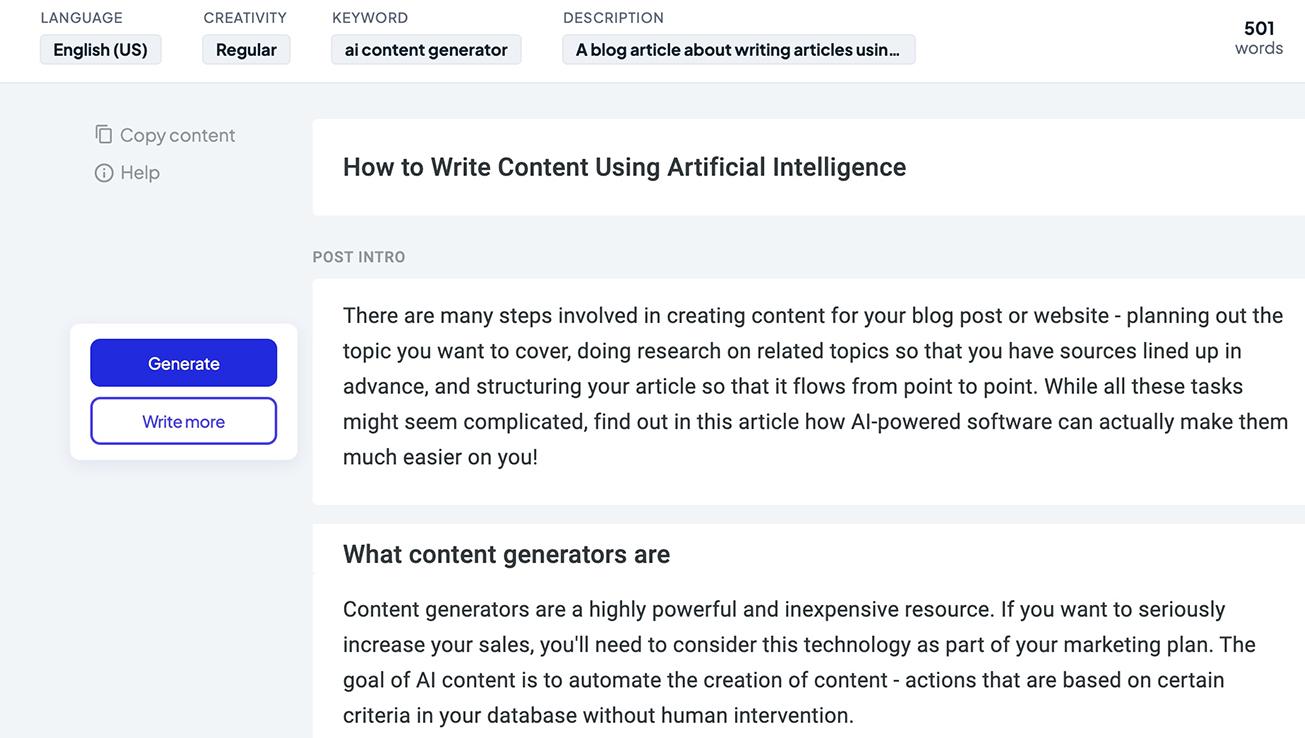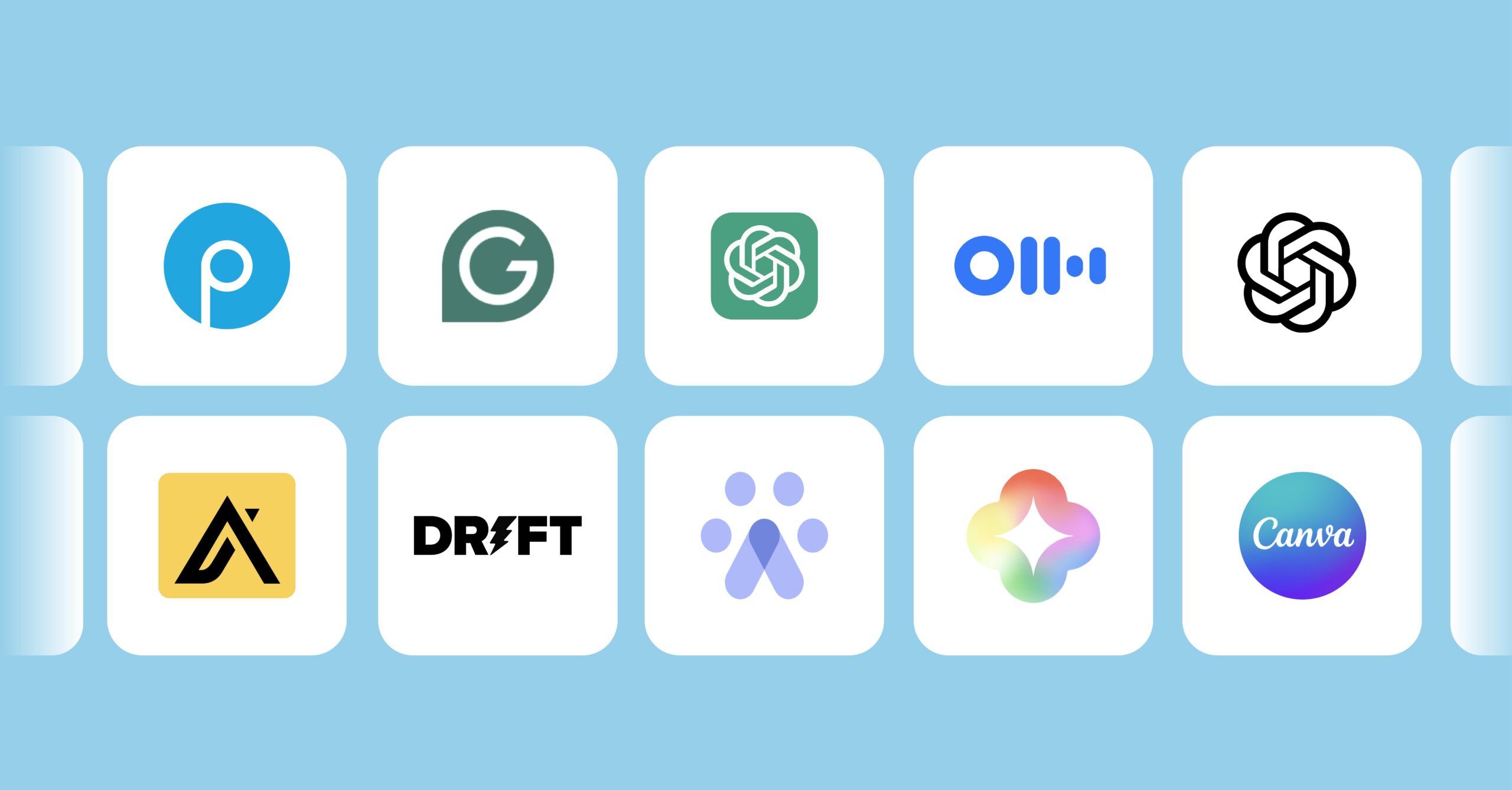
In a world where technology is evolving at breakneck speed, the landscape of artificial intelligence is reshaping how we work, create, and connect. As we step into 2025, the array of AI tools available to us is more impressive than ever, promising to enhance productivity, boost creativity, and streamline everyday tasks. Whether you’re a business owner looking to optimize operations, a content creator seeking inspiration, or simply someone curious about the latest innovations, there’s something here for everyone. In this article, we’ll dive into the 29 top AI tools that you absolutely need to try this year. These aren’t just trends; they’re game-changers that could revolutionize the way you tackle challenges, make decisions, and unleash your potential. Ready to unlock the future? Let’s explore these must-have tools together!
Exploring the Future of AI Tools
The landscape of artificial intelligence is evolving rapidly, and with it comes an exciting array of tools designed to enhance productivity, creativity, and efficiency across various sectors. As we step into 2025, the integration of AI tools into our daily workflows is becoming a necessity rather than a luxury. With so many options available, it’s essential to identify the tools that can truly make a difference in our lives.
One of the standout features of upcoming AI tools is their ability to learn and adapt to user preferences. Imagine a tool that not only understands your work style but also predicts your needs. This level of personalization is set to change how we interact with technology, making workflows smoother and more intuitive. Tools that harness this capability are likely to be at the forefront of productivity enhancements.
Collaboration is another area where AI tools are making significant strides. By incorporating advanced algorithms, these tools can facilitate seamless communication and project management among team members, regardless of location. Whether it’s through smart scheduling assistants or real-time language translation, the future of teamwork is bright and interconnected.
For those in creative fields, AI is poised to revolutionize the way we approach design and content creation. Tools that assist with graphic design, video editing, and content generation are becoming more sophisticated, allowing creators to produce high-quality work with less effort. Features like automatic image enhancement or AI-driven writing assistants not only save time but also inspire new ideas and creativity.
| Category | Key Features | Examples |
|---|---|---|
| Productivity | Task automation, smart scheduling | Notion, Todoist |
| Collaboration | Real-time updates, language translation | Slack, Microsoft Teams |
| Design | AI-enhanced graphics, video editing | Canva, Adobe Sensei |
| Content Creation | AI writing, idea generation | Jasper, Copy.ai |
Security is yet another domain where AI tools are set to shine. With the increasing amount of data breaches and cyber threats, AI-driven security solutions can offer proactive measures and real-time surveillance. These tools analyze patterns and detect anomalies, ensuring that sensitive information remains protected. As we continue to navigate a digital-first world, safeguarding our data is paramount.
In education, AI tools are transforming the way students learn and educators teach. Personalized learning experiences powered by AI can cater to individual student needs, helping to identify strengths and weaknesses. Additionally, tools that automate administrative tasks allow educators to focus more on teaching and less on paperwork.
As we look ahead, it’s clear that the future of AI tools will be characterized by enhanced user experiences, greater efficiency, and innovative capabilities. Investing time in exploring these tools now can pave the way for a more productive and creative future. The possibilities are endless, and those who adapt early will undoubtedly reap the rewards.
Why You Should Embrace AI in Your Daily Life
In today’s fast-paced world, integrating artificial intelligence into your daily routines can significantly enhance productivity and efficiency. Imagine having tools at your fingertips that can streamline mundane tasks, provide personalized recommendations, and even assist in decision-making. With the evolving landscape of AI technology, embracing these innovations is no longer a luxury but a necessity.
Enhance Your Productivity
AI tools are designed to handle repetitive tasks, allowing you to focus on what truly matters. For instance, scheduling apps powered by AI can analyze your calendar and suggest optimal meeting times, saving you the hassle of back-and-forth emails. Similarly, project management tools with AI capabilities can prioritize tasks based on deadlines and team workloads, ensuring that nothing falls through the cracks.
Personalized Experiences
One of the most exciting aspects of AI is its ability to tailor experiences to individual preferences. From music streaming services that curate playlists based on your listening habits to shopping platforms that recommend products suited to your style, AI understands your likes and dislikes better than ever. By using these tools, you can discover new favorites that resonate with your unique tastes.
Data-Driven Insights
In both personal and professional realms, the power of data is immense. AI tools can analyze vast amounts of information, providing you with actionable insights that can inform your decisions. Whether you’re a business owner looking to optimize operations or simply someone trying to make smarter purchases, AI can help you navigate the data deluge, turning raw numbers into meaningful strategies.
Improving Communication
AI-driven chatbots and virtual assistants are revolutionizing how we communicate. They can handle customer inquiries 24/7, ensuring that responses are prompt and efficient. In personal use, smart assistants can help manage your daily tasks through voice commands, setting reminders, or even controlling smart home devices. This seamless interaction not only saves time but also makes life more manageable.
Creative Collaborations
Who says AI is only for analytical tasks? Creative professionals are utilizing AI tools to brainstorm ideas, generate content, and even compose music. With AI as a collaborative partner, you can explore new creative avenues and push the boundaries of your imagination. This blend of human creativity and AI efficiency can lead to groundbreaking results you might never have achieved alone.
Cost-Effectiveness
Investing in AI tools may seem daunting, but the potential savings and efficiency gains often outweigh the costs. By automating routine tasks, businesses can reduce labor costs, while individuals can save money by making more informed purchasing decisions. In the long run, the integration of AI is likely to lead to significant financial benefits, making it a wise investment for anyone looking to improve their daily life.
As the AI revolution continues to unfold, now is the perfect time to explore the plethora of tools available and see how they can improve your life. With countless options ranging from personal assistants to advanced project management systems, there’s something for everyone. Embracing AI today means setting yourself up for a more efficient, personalized, and innovative tomorrow.
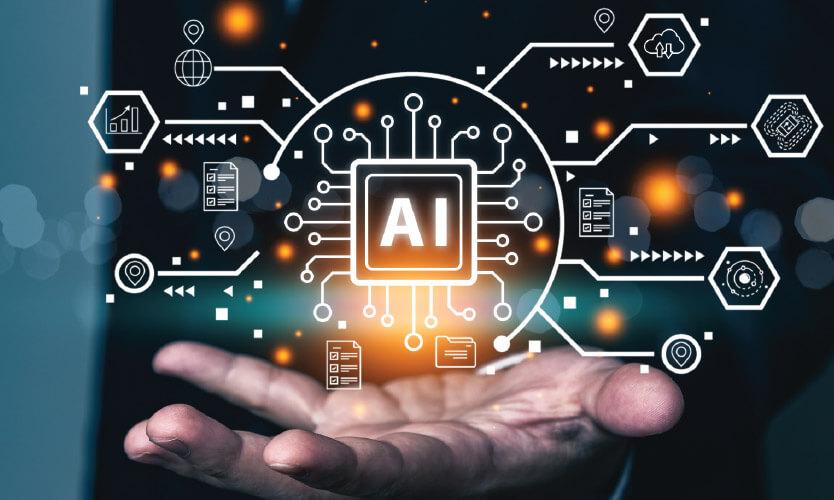
Key Features to Look for in AI Tools
When exploring the vast landscape of AI tools, it’s essential to focus on features that can elevate your productivity and creativity. The right tools can seamlessly integrate into your workflow, enhancing your efficiency and effectiveness. Here are some key characteristics to prioritize:
- User-Friendly Interface: Look for tools that offer intuitive navigation and design. A clean, easy-to-use interface will save you time and allow you to focus on tasks rather than figuring out how to operate the software.
- Integration Capabilities: Ensure that the AI tool can easily integrate with the platforms and applications you already use. Compatibility with popular software can streamline your processes and reduce the learning curve.
- Customization Options: The ability to tailor the AI tool to your specific needs is vital. Features that allow for personalized settings or workflows can enhance user experience and efficiency.
- Scalability: As your needs grow, your tools should be able to grow with you. Choose AI solutions that offer scalability, ensuring they can handle increased workloads without compromising performance.
- Data Security: In an era where data breaches are rampant, selecting tools that prioritize data security and privacy is crucial. Look for solutions that comply with regulations and provide robust security features.
Another critical aspect to consider is the quality of the AI’s algorithms. You want tools that utilize advanced, reliable algorithms to deliver accurate results. Pay attention to:
- Machine Learning Capabilities: Tools that incorporate machine learning can adapt over time, improving their performance and accuracy as they process more data.
- Natural Language Processing (NLP): For tools that involve text, strong NLP capabilities ensure the AI can understand and generate human-like text, making interactions smoother and more productive.
- Real-Time Analytics: Access to insights and analytics in real-time allows for quicker decision-making, helping you stay ahead of trends and optimize your strategies.
Cost-effectiveness is also an essential factor. While some tools may offer advanced features, they may not fit your budget. Consider:
- Pricing Models: Look for transparent pricing models that fit your budget. Whether it’s subscription-based, pay-as-you-go, or one-time payment, ensure you choose what aligns with your financial planning.
- Free Trials: Many AI tools offer free trials. Take advantage of these to evaluate the tool’s performance and features before making a financial commitment.
| Feature | Importance |
|---|---|
| User-Friendly Interface | Enhances productivity and reduces training time |
| Integration Capabilities | Streamlines processes with existing tools |
| Customization Options | Improves user experience and satisfaction |
| Data Security | Protects sensitive information |
Lastly, consider the support and community that surrounds the AI tool. Strong customer support and an active user community can make a significant difference when you encounter challenges or need to learn new features.
- Documentation and Resources: Comprehensive tutorials, user guides, and FAQs help you make the most of the tool.
- Community Engagement: Active forums and user groups offer a platform for sharing tips, tricks, and best practices.
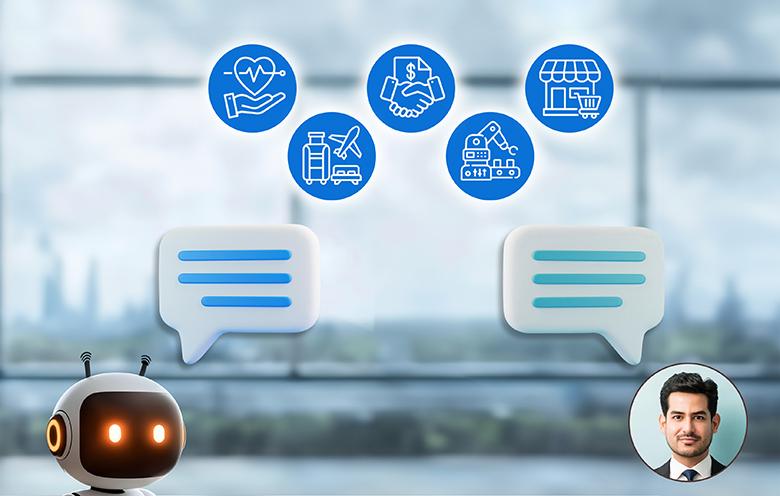
Revolutionizing Productivity: Must-Have AI Assistants
In today’s fast-paced world, staying ahead of the curve means embracing technology that enhances our efficiency. AI assistants have emerged as the game-changers, streamlining tasks and helping us focus on what truly matters. From managing your calendar to generating content, these intelligent tools are not just a luxury; they are essential for anyone looking to boost productivity in 2025.
Imagine having an assistant that understands your preferences and can anticipate your needs. The latest AI tools are designed with advanced algorithms that learn over time, allowing them to provide personalized recommendations. Here are some standout features that make these tools indispensable:
- Smart Scheduling: AI can analyze your availability, preferences, and even suggest optimal meeting times based on various factors.
- Effortless Content Creation: With tools that can generate blog posts, social media content, and reports, you can maintain a steady stream of communication without the headache of writer’s block.
- Data Analysis: AI assistants can sift through large datasets, providing insights that inform your decision-making process more effectively than ever.
- Task Automation: Routine tasks can be automated, freeing up valuable time for more strategic activities.
Consider how these tools can transform your day-to-day operations. For instance, using an AI assistant to manage email correspondence can cut down on the time spent sifting through countless messages. With the right tool, you can prioritize urgent communications and even generate automatic replies, ensuring you never miss a beat.
Security is often a concern with digital tools, but many of the latest AI assistants come equipped with robust security features. They protect sensitive information while providing features like:
- End-to-End Encryption: Ensures that your data remains confidential.
- Regular Security Updates: Keeps your tools and data secure against emerging threats.
- User Access Control: Allows you to manage who sees what within team settings.
Integrating these AI assistants into your workflow is simpler than you might think. Many of them offer:
| Feature | Description |
|---|---|
| Integration with Popular Apps | Seamlessly connect with tools like Slack, Trello, or Google Workspace. |
| Customizable Workflows | Create workflows that suit your specific needs and preferences. |
| User-Friendly Interfaces | Intuitive designs that require minimal training. |
As we venture further into 2025, the capabilities of AI assistants will only continue to expand. By adopting these tools now, you position yourself and your organization to be more agile, innovative, and ready to tackle the challenges of tomorrow. Don’t just keep up—lead the way with the power of AI at your fingertips.
Enhancing Creativity: AI Tools for Artists and Writers
Unleashing Your Imagination
In the ever-evolving landscape of creativity, artists and writers are continuously seeking new ways to enhance their craft. Enter AI tools—these innovative technologies are not just futuristic concepts; they are here to help you unlock your true potential. Imagine having a brainstorming partner that can generate ideas, refine your concepts, or even help you visualize your next masterpiece.
AI Tools for Artists
For visual creators, the right AI tools can transform the way you approach your artwork. Here are some that you might find indispensable:
- DALL-E 3: Create stunning visuals from text prompts, allowing your imagination to run wild.
- DeepArt: Transform your photos into artwork using the styles of famous painters.
- Artbreeder: Mix and match images to evolve new artistic styles and ideas.
- Runway ML: A suite of tools for video and image editing that harness AI to help you create like never before.
AI Tools for Writers
Writers, too, can benefit from the magic of AI. Whether you’re drafting your next novel or crafting a compelling blog post, consider these tools:
- ChatGPT: Engage in conversations that help spark new ideas or overcome writer’s block.
- Grammarly: More than just a spell checker, it offers enhanced writing suggestions based on your tone and intent.
- Copy.ai: Generate marketing copy, product descriptions, or even entire blog posts in seconds.
- Scrivener: While not exclusively an AI tool, its organizational features are enhanced with AI capabilities for structured writing.
Collaboration between Art and Words
The intersection of visual art and writing is where creativity truly flourishes. Tools that cater to both disciplines can help you create cohesive and engaging projects. Consider:
| Tool | Purpose |
|---|---|
| Canva | Design eye-catching graphics for your writing projects. |
| Storybird | Pair your writing with beautiful illustrations to tell visual stories. |
| Adobe Spark | Create stunning visuals and animated content easily. |
Personalized Feedback and Growth
One of the remarkable benefits of utilizing AI tools is the ability to receive personalized feedback instantly. Many AI platforms integrate machine learning algorithms that analyze your work and provide suggestions tailored to your style. This level of insight can guide you in refining your technique, enhancing your narrative, or elevating your artistic composition.
Future of Creativity
As we look ahead to 2025 and beyond, the possibilities for artists and writers are boundless. AI will continue to reshape the way we create, enabling us to explore new horizons in our craft. Don’t be left behind—embrace these tools and watch as your creativity flourishes in ways you never thought possible. Whether through enhancing your workflow, inspiring new ideas, or providing feedback, the power of AI is at your fingertips.
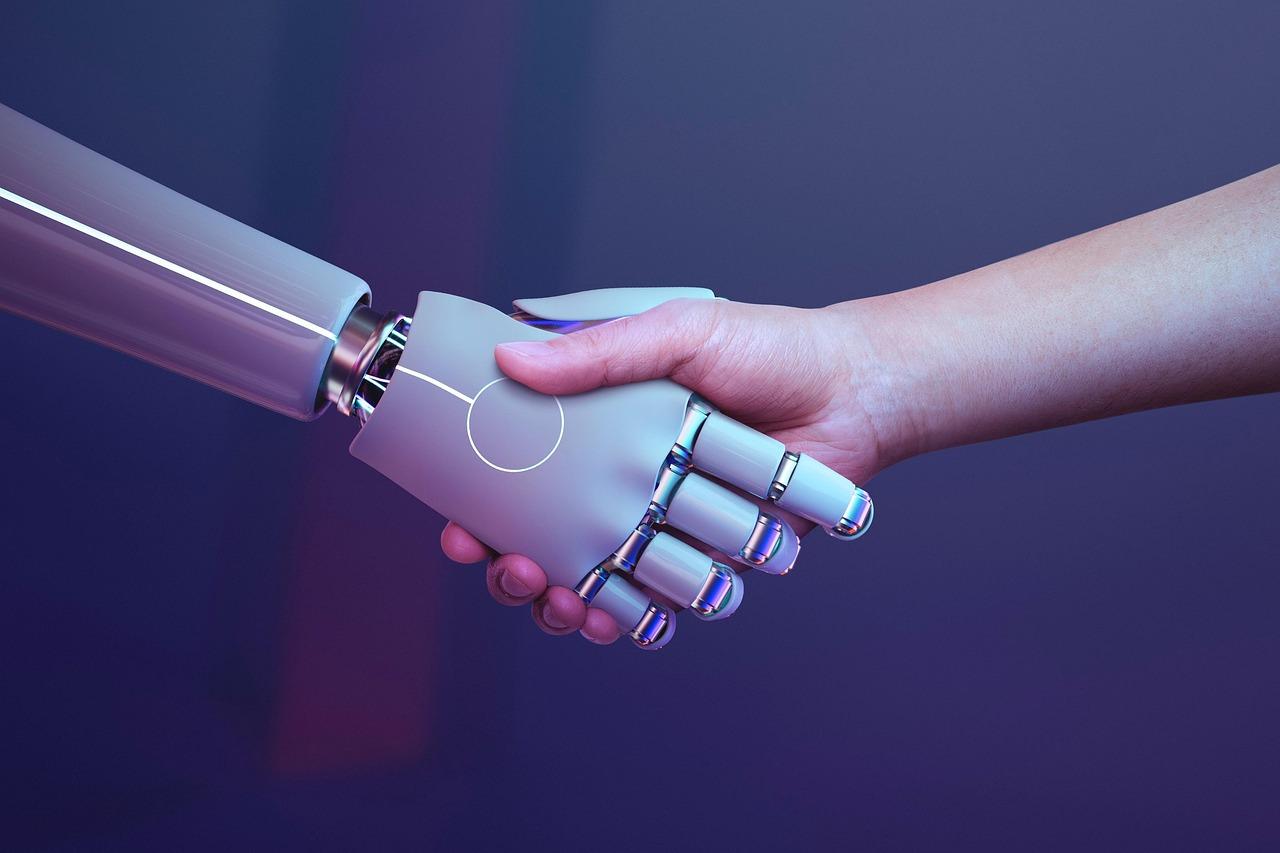
Streamlining Business Operations with AI Solutions
In today’s fast-paced business environment, leveraging AI solutions can drastically improve operational efficiency. By automating repetitive tasks and providing insightful data analytics, companies can focus more on strategic initiatives rather than mundane processes. Here are some impactful AI tools that you should consider integrating into your workflow in 2025:
- ChatGPT: This conversational AI can streamline customer support, enabling businesses to engage with clients 24/7 while providing instant responses to queries.
- Zapier: This automation tool connects various apps and services, allowing you to automate workflows without needing to code. Imagine automating data entry and routine communications effortlessly.
- Salesforce Einstein: By incorporating AI into your CRM, you can predict customer behavior, personalize marketing efforts, and enhance sales strategies.
- Tableau: An advanced analytics platform that helps businesses visualize their data, enabling smarter decision-making through insightful data stories.
- Monday.com: This project management tool integrates AI features to optimize task assignments, deadlines, and resource allocation, helping teams function more cohesively.
Moreover, AI can significantly enhance your marketing efforts. With tools like HubSpot and Marketo, businesses can utilize AI-powered algorithms to segment audiences and tailor content effectively. This not only increases engagement but also boosts conversion rates, making your marketing campaigns more productive.
In addition, consider employing AI-driven analytics tools such as Google Analytics 4 and Mixpanel. These platforms utilize machine learning to provide deeper insights into customer behavior and predict trends, enabling you to make informed decisions based on data rather than intuition alone.
| AI Tool | Functionality | Benefits |
|---|---|---|
| ChatGPT | Customer Support | 24/7 engagement, instant responses |
| Zapier | Workflow Automation | Streamlined processes, no coding needed |
| Salesforce Einstein | CRM Enhancement | Predictive analytics, personalized marketing |
| Tableau | Data Visualization | Informed decision-making |
| Monday.com | Project Management | Improved team collaboration |
Implementing these AI tools will not only help in streamlining your operations but also drive overall growth. By adopting these technologies, you position your business at the forefront of innovation, ready to tackle the challenges of tomorrow with confidence.
Remember, the key to successful integration lies in selecting tools that align with your business goals and culture. Take the time to assess which solutions resonate most with your unique operational needs, and don’t hesitate to experiment with different tools to find the best fit.

Unlocking Insights: AI Analytics Tools to Consider
In today’s data-driven landscape, harnessing the power of artificial intelligence in analytics is crucial for businesses aiming to gain a competitive edge. With the rapid evolution of technology, several AI analytics tools have emerged that can transform the way organizations interpret data. These tools not only streamline processes but also provide invaluable insights that can drive strategic decisions.
Here are some top AI analytics tools to consider integrating into your operations:
- Tableau: Known for its robust data visualization capabilities, Tableau uses AI to enhance user experience and insights. It simplifies the process of creating complex visualizations from large datasets, making it easier for teams to identify trends.
- Google Analytics 4: The latest iteration of Google Analytics leverages machine learning to provide predictive insights, helping businesses understand user behavior and optimize marketing strategies effectively.
- Qlik Sense: This powerful analytics platform offers advanced analytics and data integration capabilities. Qlik’s associative engine allows users to explore data freely, making it easy to uncover hidden insights.
- Microsoft Power BI: Power BI enables users to visualize data and share insights across their organization. It incorporates AI to deliver advanced analytics and natural language queries, making data exploration accessible to everyone.
When evaluating these tools, consider what features are most critical for your organization:
| Tool | Key Features | Best For |
|---|---|---|
| Tableau | Data Visualization, AI-Driven Insights | Large Enterprises |
| Google Analytics 4 | User Behavior Tracking, Predictive Insights | Web Analytics |
| Qlik Sense | Data Integration, Associative Engine | Data Exploration |
| Microsoft Power BI | Data Sharing, Natural Language Queries | Business Intelligence |
Integrating AI analytics tools into your business can lead to improved decision-making and operational efficiency. By leveraging the right tools, your organization can turn data into actionable insights, facilitating a culture of informed decision-making. In a world where data is king, these tools empower you to reign supreme in your industry.
Furthermore, staying updated with the latest trends and innovations in AI analytics is essential. As technology evolves, new features and capabilities become available that can further enhance your analytics processes. Regularly revisiting your toolkit ensures that your organization is equipped with the most effective solutions to meet its analytical needs.
Ultimately, the right AI analytics tool can unlock a treasure trove of insights, enabling businesses to adapt swiftly to market changes and customer demands. Choose wisely, and your analytics journey will undoubtedly yield significant rewards.

Boosting Learning and Education with AI Technologies
Artificial Intelligence is transforming the landscape of education, providing innovative tools that cater to diverse learning needs. With the right AI technologies, educators can enhance their teaching methods, streamline administrative tasks, and create personalized learning experiences that engage students like never before.
One of the standout features of AI in education is its ability to analyze data and generate insights. By utilizing AI tools, teachers can:
- Track student performance: Monitor progress and identify areas where students may need additional support.
- Personalize learning paths: Tailor lessons to fit individual learning styles and paces.
- Automate administrative tasks: Save time on grading, scheduling, and other repetitive tasks, allowing more focus on teaching.
Among the impressive array of tools available, a few stand out for their unique capabilities. Consider tools that employ natural language processing to engage students in interactive learning experiences. They can provide instant feedback, answer questions, and even facilitate discussions that foster critical thinking.
Moreover, virtual tutors powered by AI can offer assistance to students outside of classroom hours. These AI-driven platforms help reinforce lessons taught in school, ensuring that learners have access to support whenever they need it. For instance, tools that adapt to a student’s knowledge level and learning pace can significantly enhance the educational experience.
Another exciting application of AI is in content creation. Educators can leverage AI to generate quizzes, lesson plans, and instructional materials quickly and efficiently. Imagine reducing hours of planning time to just a few clicks! This empowers teachers to devote more time to engaging with students and less time on administrative overhead.
To help navigate the myriad options available, here are some of the most impactful AI tools for education to keep an eye on:
| Tool | Description |
|---|---|
| Quillionz | Generates quizzes and assessment questions from any text input. |
| Knewton Alta | An adaptive learning platform that personalizes courses for students. |
| Socratic | An AI-driven app that helps students with homework by providing detailed explanations. |
| Grammarly | An AI writing assistant that helps improve grammar, clarity, and style. |
As we approach 2025, the integration of AI technologies in education will only deepen. Embracing these tools not only prepares students for a future where technology is interwoven into every aspect of life but also equips educators with the means to inspire and engage learners in meaningful ways. The potential of AI to enhance educational outcomes is immense, and those who adopt these innovations will undoubtedly reap the benefits.

AI in Health: Transformative Tools for Wellness
The healthcare industry is undergoing a revolutionary transformation, thanks to the rapid advancements in artificial intelligence. From predictive analytics to personalized treatment plans, AI tools are reshaping how we approach health and wellness. By harnessing the power of data, these innovative solutions not only enhance patient care but also streamline operations, making healthcare more efficient and accessible.
Imagine a world where your health data is analyzed in real-time, allowing for tailored wellness recommendations and preventive measures. AI algorithms can sift through vast amounts of information—from genetic data to lifestyle choices—providing insights that were previously unimaginable. This level of personalization is set to redefine how we manage our health, empowering individuals to take charge of their wellness journey.
One of the most exciting applications of AI in health is the development of intelligent diagnostic tools. These systems can assist healthcare professionals in identifying diseases at an early stage, often with greater accuracy than traditional methods. For instance, AI-driven imaging technologies can detect anomalies in radiology scans, which can be critical for early intervention.
Moreover, the rise of virtual health assistants is revolutionizing patient engagement. These chatbots and virtual coaches can provide advice, remind patients to take medications, or even guide them through rehabilitation exercises. With 24/7 availability, they break down barriers to access, ensuring patients receive support whenever they need it.
Consider the impact of AI in mental health care. AI tools can analyze speech patterns and text to identify signs of anxiety or depression, allowing for timely intervention. This proactive approach could lead to improved outcomes and a more supportive environment for those struggling with mental health issues.
Additionally, AI is streamlining administrative tasks within healthcare facilities. Systems that automate scheduling, billing, and patient record management free up valuable time for healthcare professionals, allowing them to focus more on patient care. This efficiency not only improves the patient experience but also enhances overall operational effectiveness.
Here’s a quick overview of some powerful AI tools making waves in the health sector:
| Tool Name | Functionality | Benefit |
|---|---|---|
| IBM Watson Health | Data analysis and clinical decision support | Enhances treatment accuracy |
| Babylon Health | AI-powered virtual consultations | Increases healthcare access |
| Ginger | Mental health support via virtual coaching | Provides 24/7 mental health resources |
| PathAI | Pathology diagnostics | Improves diagnostic accuracy |
| Tempus | Genomic data analysis | Personalizes cancer treatment |
As we look ahead to 2025, the integration of AI in health will only deepen. The tools available today are just the tip of the iceberg, with emerging technologies set to further enhance our understanding of wellness. Whether it’s through advanced machine learning algorithms or improved patient engagement strategies, the future of healthcare is bright and promising.
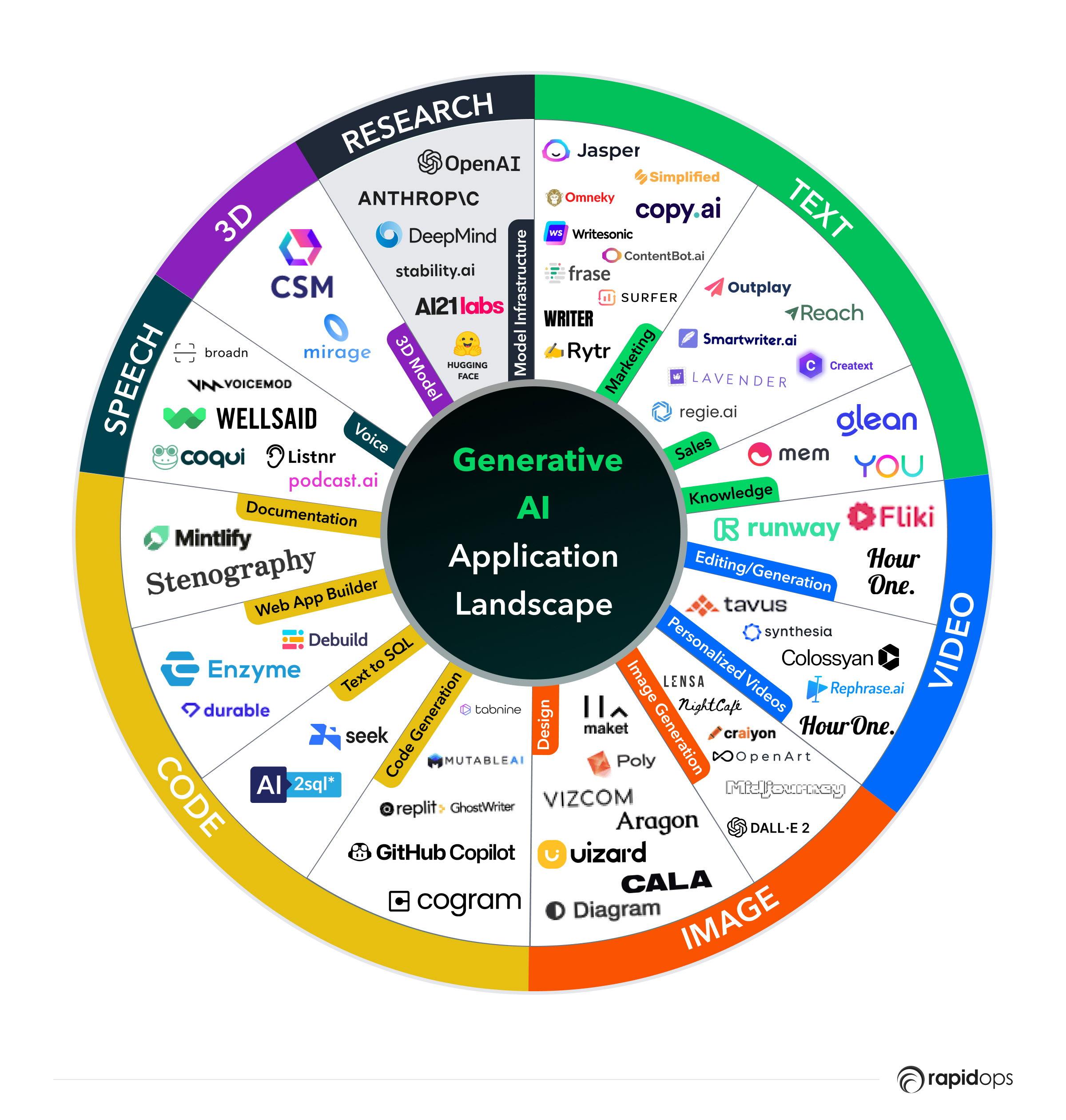
Security Meets Convenience: AI Tools for Safe Online Experiences
In a world where our digital footprints expand daily, the balance between security and convenience has become paramount. With the advent of AI tools, users can now navigate the online landscape with enhanced safety, all while enjoying a seamless experience. It’s a game-changer, transforming how we interact with technology.
Imagine a browser that not only protects your data but also learns your habits to streamline your online interactions. AI-driven security extensions come equipped with features that automatically detect phishing sites, block malware, and even provide real-time alerts when unusual activity is detected. Some of the standout tools to consider include:
- AI Shield – Protects against identity theft by monitoring your online presence.
- PhishGuard – Uses machine learning to identify and warn users of potential phishing attempts.
- SecureLogin – Offers passwordless authentication through biometric recognition.
Moreover, as convenience is key in today’s fast-paced environment, AI tools are simplifying complex security protocols. Smart password managers can generate and store complex passwords, automatically filling them in as needed. This not only enhances security but also eliminates the frustration of remembering multiple logins. Here’s a quick look at some popular options:
| Tool Name | Key Features |
|---|---|
| PassGenie | Generates secure passwords and syncs across devices. |
| Keeper | Offers secure storage and sharing of sensitive information. |
| LastPass | Facilitates easy password retrieval and management. |
AI-driven virtual assistants are also elevating the level of online security. These tools can analyze your behavior patterns, alerting you when they notice anything suspicious. For instance, if a login attempt is made from an unfamiliar device or location, these assistants can trigger multi-factor authentication steps to ensure your accounts remain secure without compromising ease of access.
Lastly, the integration of AI in data encryption tools is a must-mention. AI algorithms are becoming increasingly adept at encrypting sensitive information, making it nearly impossible for unauthorized users to access your personal data. Look for tools that offer:
- End-to-end encryption to secure communications.
- AI-powered anomaly detection to prevent data breaches.
- Automated compliance checks to adhere to regulations like GDPR.
In summation, the future of online safety is bright, thanks to innovative AI tools that enhance security while ensuring convenience. As we dive into 2025, investing in these technologies will not only safeguard your personal information but also streamline your digital interactions, making for an overall better online experience.
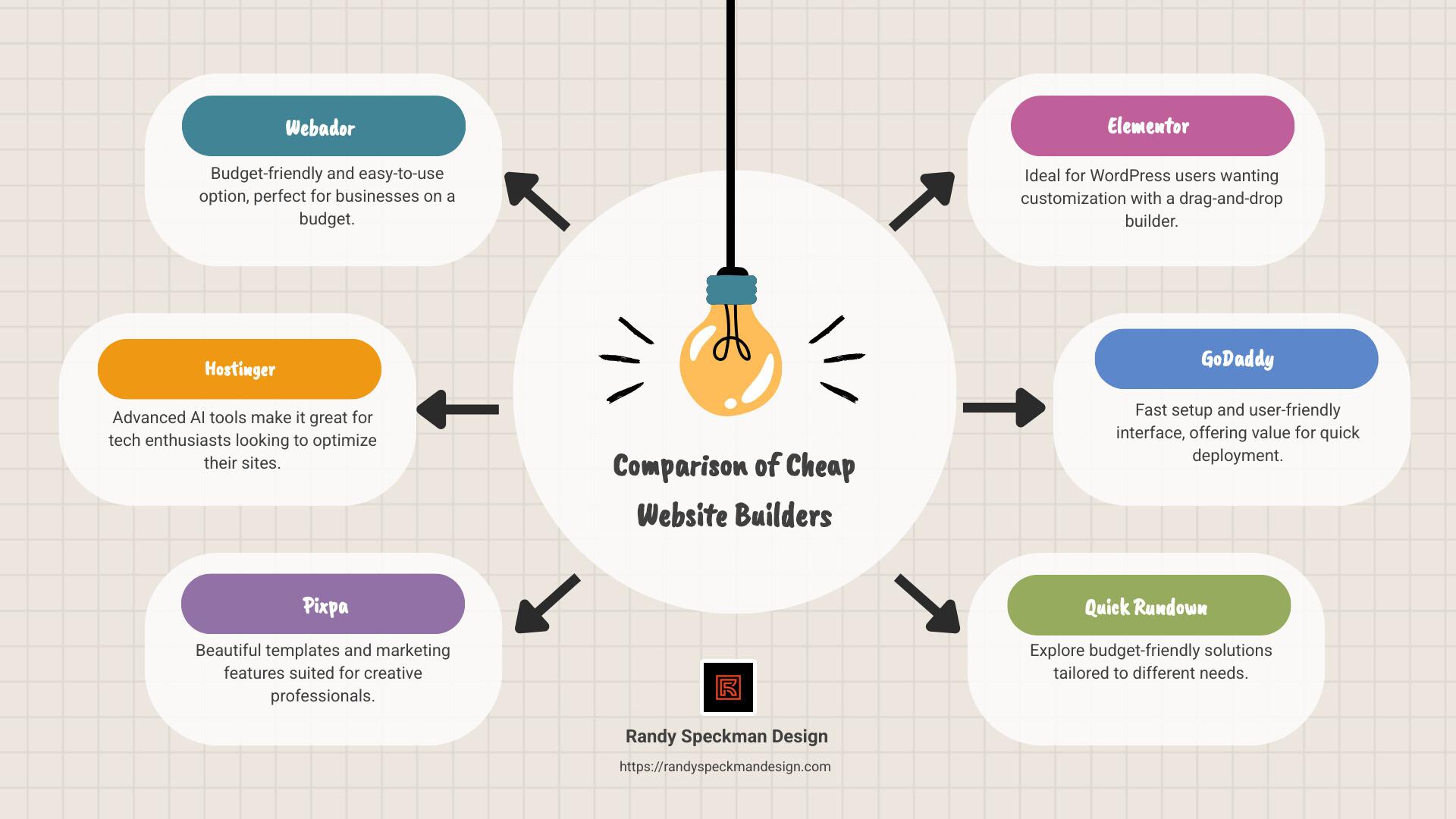
Budget-Friendly AI Options for Everyone
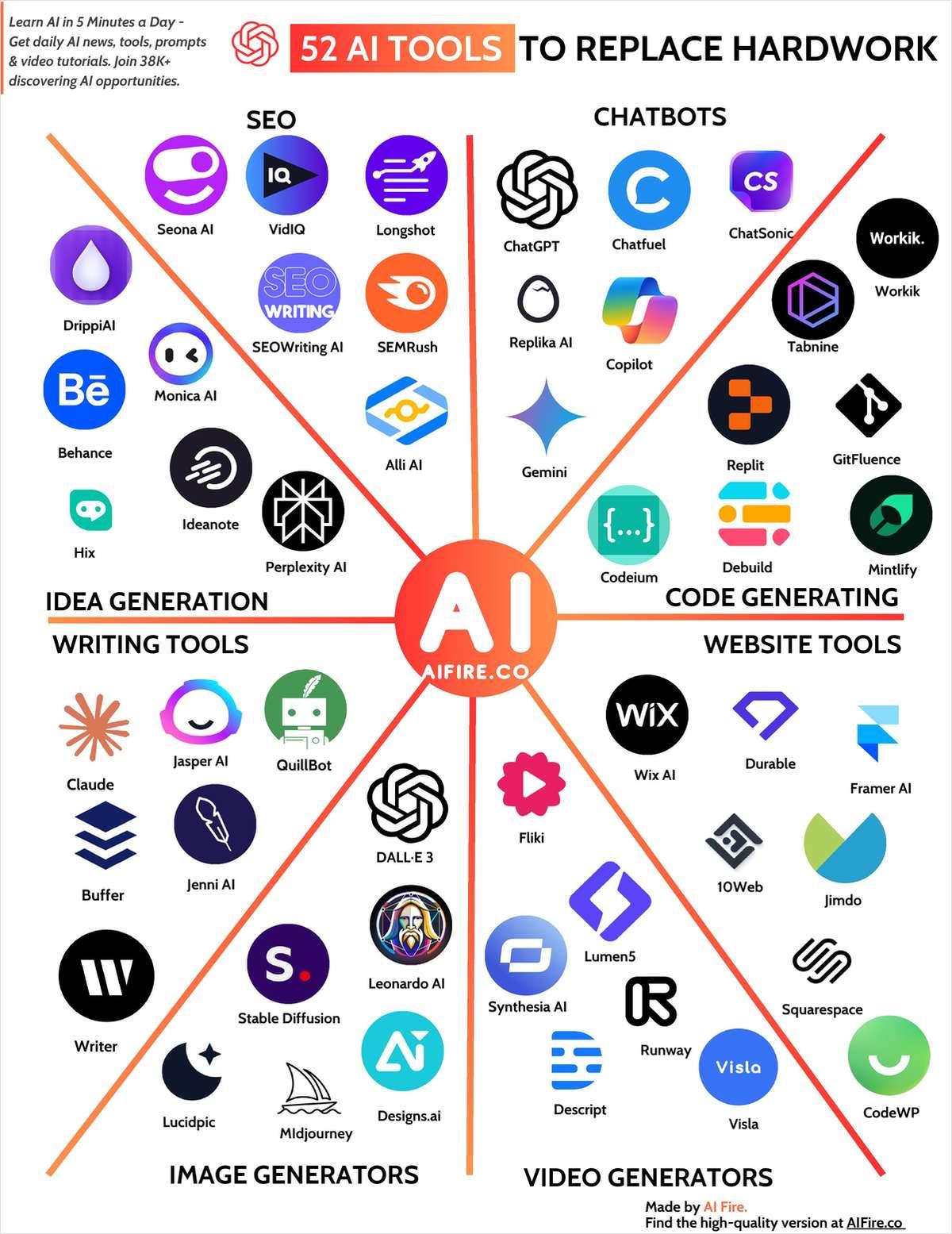
Integration Made Easy: How to Combine AI Tools
In today’s fast-paced digital landscape, combining various AI tools can supercharge your productivity and creativity. By integrating these technologies, you can harness their unique strengths to streamline workflows, enhance decision-making, and ultimately drive better outcomes for your projects. Here’s how you can make integration a breeze.
Identify Your Needs: Start by assessing your specific needs. Are you looking to automate repetitive tasks, gain insights from data, or improve customer engagement? Understanding your objectives is crucial before diving into the integration process.
- Task Automation: Tools like Zapier or Automate.io can connect different applications, allowing you to automate workflows effortlessly.
- Data Analysis: Use platforms like Tableau or Google Data Studio to visualize and interpret data from various AI tools.
- Customer Interaction: Implement AI chatbots from companies like Drift or Intercom to enhance user experience on your website.
Choose Compatible Tools: Once you’ve identified your needs, select tools that can work together seamlessly. Look for APIs and built-in integrations that allow for smooth data exchange. It’s essential to ensure that these tools complement each other without causing disruptions.
| Tool | Integration Capability | Use Case |
|---|---|---|
| Zapier | Over 2,000 app integrations | Automating repetitive tasks |
| Tableau | Connects with databases and AI models | Data visualization and analysis |
| Drift | Integrates with CRM and email platforms | Enhancing customer engagement |
Utilize Middleware Solutions: Middleware platforms can act as a bridge between various AI tools, allowing for smoother integration. They can help you manage data flow and streamline processes, making your life easier. Think of middleware as the unsung hero that keeps everything running smoothly behind the scenes.
Test and Optimize: After integrating your tools, it’s crucial to monitor their performance and make adjustments as needed. A/B testing can be particularly useful here; it allows you to see what combinations work best for your specific context, helping you refine your approach.
Stay Updated: The AI landscape is constantly evolving, with new tools and updates emerging regularly. Keeping abreast of the latest trends will enable you to optimize your integrations and leverage new capabilities to stay competitive.
By following these steps, you can create a cohesive ecosystem of AI tools that not only enhances your productivity but also drives innovation within your projects. Embrace the power of integration and unlock the full potential of AI in your workflow.
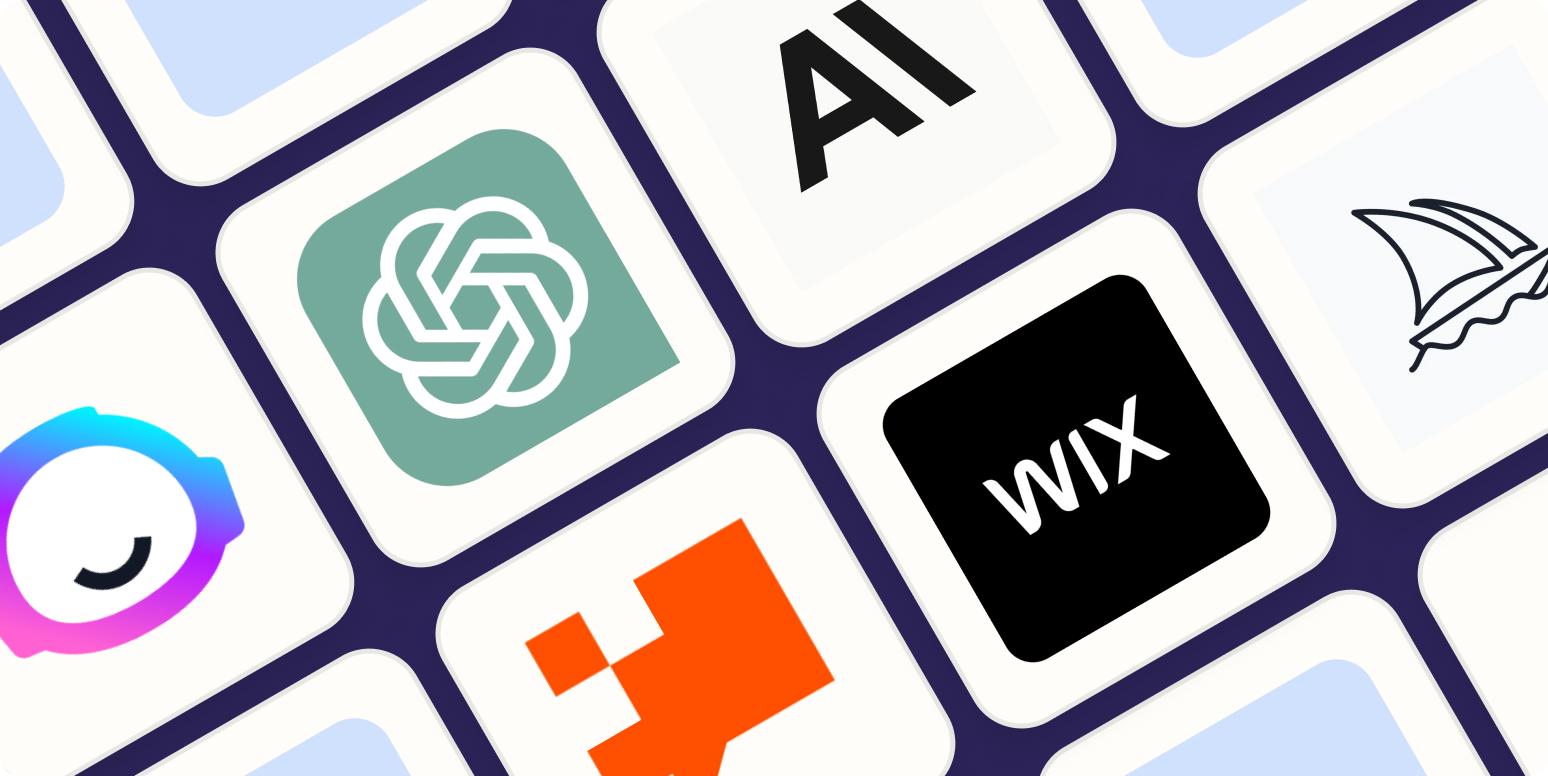
Getting Started: A Beginners Guide to AI Tools
Embarking on your journey with AI tools can feel overwhelming, but with the right guidance, you can navigate the landscape effortlessly. These tools are designed to enhance productivity, streamline processes, and unleash creativity. Whether you’re an entrepreneur, a student, or simply curious about technology, there’s something in the AI space for you.
First, it’s essential to identify your needs. Are you looking to automate mundane tasks, improve decision-making, or generate creative content? Understanding your goals will help you select the most suitable tools. Here are some popular categories of AI tools you might explore:
- Content Creation: These tools assist in writing blogs, creating social media posts, or even scripting videos.
- Data Analysis: Use AI to uncover insights from large datasets, making sense of complex information.
- Design Tools: From graphic design to video editing, AI can simplify and enhance your creative projects.
- Productivity Boosters: Automate your emails, schedule meetings, and manage tasks with ease.
Once you have a clearer idea of your objectives, it’s time to dive into specific tools. Here are a few standout options to consider:
| Tool Name | Primary Use | Key Feature |
|---|---|---|
| ChatGPT | Content Creation | Conversational AI for writing assistance |
| Tableau | Data Visualization | Interactive dashboards for data storytelling |
| Canva | Graphic Design | AI-powered design suggestions |
| Trello | Productivity Management | Automated task prioritization |
Don’t shy away from trying several tools! Most offer free trials, allowing you to experiment and find the best fit for your workflow. As you test different applications, pay attention to how intuitive they are to use. A user-friendly interface can make a significant difference, especially if you’re new to technology.
Networking is another valuable tool in your AI journey. Join online communities, forums, or social media groups focused on AI. Sharing experiences and resources with others can provide fresh insights and support, making your exploration more enriching.
keep learning! The AI landscape is always changing, with new tools emerging regularly. Engaging with online courses, webinars, or even YouTube channels dedicated to AI will help you stay ahead. By continually expanding your knowledge, you’ll not only be able to make informed decisions about which tools to adopt, but you’ll also harness the full power of AI to achieve your goals.

Staying Updated: The Importance of Continuous Learning in AI
In the rapidly evolving landscape of artificial intelligence, staying updated is more than just a recommendation; it’s a necessity. As we step into 2025, the tools that once seemed revolutionary may quickly become outdated, overshadowed by new innovations that emerge almost daily. Continuous learning is not just about understanding the latest algorithms; it’s about grasping the broader implications of these advancements on our professional lives and how they can empower us to work smarter.
With the onset of new AI tools, it’s crucial to recognize their potential to transform industries. Here are a few key reasons why keeping your knowledge fresh is indispensable:
- Adaptability: The ability to adapt to new tools and technologies can significantly enhance your productivity and effectiveness. AI tools can streamline processes, automate tasks, and provide insights that were previously unattainable.
- Competitive Edge: Those who embrace continuous learning position themselves as leaders in their fields. Staying ahead of the curve means you can leverage cutting-edge tools that your competitors might not yet be utilizing.
- Networking Opportunities: Engaging in learning experiences—whether through courses, webinars, or conferences—opens doors to connect with other professionals. This network can provide support, share insights, and introduce you to new tools and techniques.
- Enhanced Problem-Solving: Familiarity with various AI tools can foster creative problem-solving. When faced with challenges, having a diverse toolkit allows you to approach problems from different angles.
To help you navigate this exciting terrain, we’ve compiled a list of some of the most promising AI tools set to make waves in 2025. Below is a simple overview of each tool and its primary function:
| Tool Name | Primary Function |
|---|---|
| ChatGPT 4.0 | Conversational AI for content generation and customer support |
| TensorFlow 3.0 | Machine learning library for building and training models |
| Hugging Face Transformers | Natural language processing for various applications |
| OpenAI Codex | Code generation and development assistance |
| DataRobot | Automated machine learning platform |
In this fast-paced environment, it’s not just about knowing these tools; it’s about understanding their potential impacts. As AI becomes integrated into daily business operations, the knowledge of how to utilize these tools effectively will set you apart as a valuable asset. Moreover, the ongoing learning process will help you anticipate changes in the market and adjust your strategies accordingly.
Ultimately, embracing continuous learning in AI is not just an investment in personal growth; it’s a commitment to your career and the value you bring to your organization. As we continue to explore innovative AI tools, remember that your ability to adapt and grow with these changes will define your success in the years to come.
Frequently Asked Questions (FAQ)
Q&A: 29 Top AI Tools You Need to Try in 2025
Q: Why should I care about AI tools in 2025?
A: That’s a great question! As we move into 2025, AI tools are becoming more integral to our daily lives and professional workflows. They can streamline tasks, enhance productivity, and even foster creativity in ways we couldn’t have imagined a few years ago. Embracing these tools now can give you a competitive edge in your field.
Q: What types of AI tools are we talking about?
A: The list includes a diverse range of tools, from AI-powered writing assistants to advanced data analytics platforms, and even creative tools for graphic design and music generation. There’s something for everyone, whether you’re a marketer, a software developer, or an artist.
Q: Are these tools easy to use?
A: Absolutely! Many of the tools on our list are designed with user-friendliness in mind. You don’t need to be a tech whiz to get started. Most platforms offer intuitive interfaces and plenty of tutorials to help you hit the ground running.
Q: Is it worth investing time and possibly money into these tools?
A: Definitely! Think of these tools as investments in your productivity and creativity. They can save you countless hours on repetitive tasks, allowing you to focus on what really matters. Plus, many of these tools have free trials, so you can test them out without any financial commitment.
Q: How can I choose the right AI tool for my needs?
A: Start by identifying the challenges you face in your work or personal projects. From there, you can look for tools that specifically address those needs. Our article provides a detailed overview of each tool, including its features and best use cases, making it easier for you to find the perfect fit.
Q: What if I’m not tech-savvy? Can I still benefit from AI tools?
A: Absolutely! Many AI tools cater to users of all skill levels. Plus, the community around these tools is often very supportive, with forums and online resources available to help you learn. You may be surprised at how quickly you can become proficient with the right guidance!
Q: Will these AI tools help me in my career?
A: Yes, using AI tools can significantly boost your career prospects! They can help you work smarter, increase your output, and even enhance your problem-solving skills. As businesses continue to adopt AI, being knowledgeable about these tools will make you a valuable asset in the job market.
Q: Are there any risks associated with using AI tools?
A: Like any technology, there are potential risks, such as data privacy concerns or over-reliance on automation. However, being informed and cautious can help minimize these risks. Our article highlights best practices for using AI tools safely and effectively.
Q: How often should I explore new AI tools?
A: Technology is evolving rapidly, so it’s a good idea to explore new tools regularly—perhaps every few months. This way, you can stay updated on the latest advancements and find out how new tools can enhance your workflow.
Q: Where can I find the full list of the top AI tools for 2025?
A: Check out our article for the complete list and detailed descriptions of each tool. We’ve curated this selection to help you navigate the crowded AI landscape and find the tools that can truly make a difference in your work and creative endeavors.
With this Q&A, we hope you’re feeling inspired to explore the exciting world of AI tools in 2025. Don’t miss out on the potential to transform your workflow and creativity!
Concluding Remarks
As we wrap up our exploration of the “29 Top AI Tools You Need to Try in 2025,” it’s clear that the future is packed with exciting innovations that can transform the way we work and live. Whether you’re a seasoned tech enthusiast or just dipping your toes into the world of artificial intelligence, there’s something on this list for everyone.
Imagine streamlining your workflow, enhancing your creativity, or making smarter decisions with just a few clicks. These tools aren’t just trends; they’re game-changers that can empower you to achieve more, faster, and with greater ease.
So, why wait? Dive in and start experimenting with these cutting-edge technologies today! The sooner you incorporate them into your routine, the sooner you’ll reap the benefits they offer. After all, the future of AI is not just coming—it’s already here, and it’s time for you to be a part of it.
Let us know which tools you’re most excited about or if you’ve tried any of them already! Your feedback could help others on their journey to harnessing the power of AI. Happy exploring!



